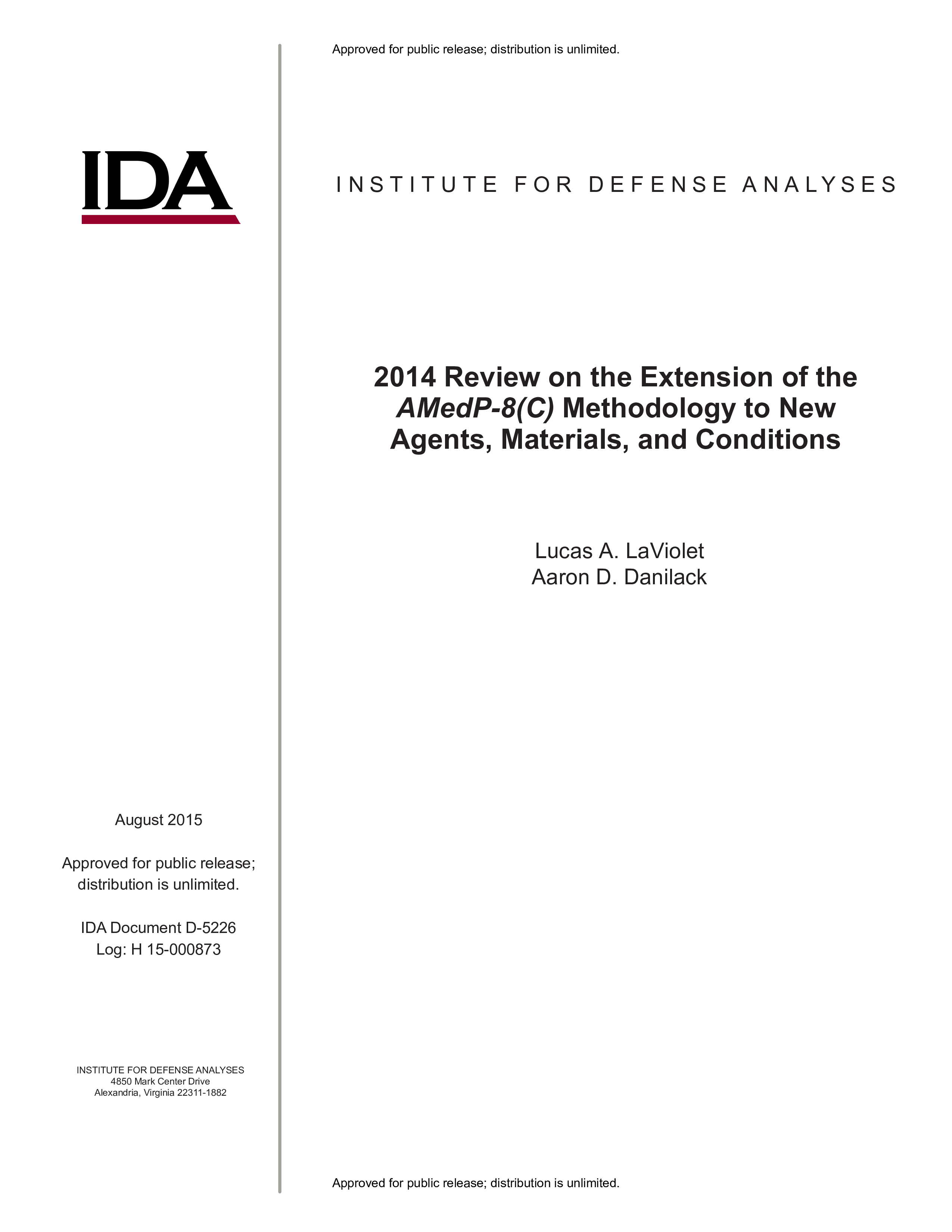In 2009, in support of the Office of The Surgeon General (OTSG), the Institute for
Defense Analyses (IDA) produced the final draft of a North Atlantic Treaty Organization
(NATO) planning guide documenting a methodology to estimate casualties from
chemical, biological, radiological, and nuclear (CBRN) weapons. That document, Allied
Medical Publication 8 (C): NATO Planning Guide for the Estimation of CBRN
Casualties, (AMedP-8(C)), promulgated in March 2011, included the parameters to
estimate casualties caused by three chemical agents, five biological agents, seven
radioisotopes, nuclear fallout, or prompt nuclear effects.1 Each year since 2009, OTSG
has sponsored IDA to publish an annual review exploring and recommending extensions
of this methodology to new agents, materials, and conditions.
The most recent version of the IDA-developed casualty estimation methodology is documented in Study Draft 2 of Allied Medical Publication 7.5 (AMedP-7.5 SD2), an updated and renamed2 publication of the NATO planning guide. In a continuing effort to identify additional improvements to this methodology, this year’s annual review is a quick-look analysis comparing the methodology’s outputs to those of Hazard Prediction and Assessment Capability (HPAC), a modeling and simulation tool developed by the Defense Threat Reduction Agency whose capabilities also include casualty estimation. The objective of this comparison is to identify additional improvements to the AMedP- 7.5 SD2 casualty estimation methodology.
The most recent version of the IDA-developed casualty estimation methodology is documented in Study Draft 2 of Allied Medical Publication 7.5 (AMedP-7.5 SD2), an updated and renamed2 publication of the NATO planning guide. In a continuing effort to identify additional improvements to this methodology, this year’s annual review is a quick-look analysis comparing the methodology’s outputs to those of Hazard Prediction and Assessment Capability (HPAC), a modeling and simulation tool developed by the Defense Threat Reduction Agency whose capabilities also include casualty estimation. The objective of this comparison is to identify additional improvements to the AMedP- 7.5 SD2 casualty estimation methodology.

